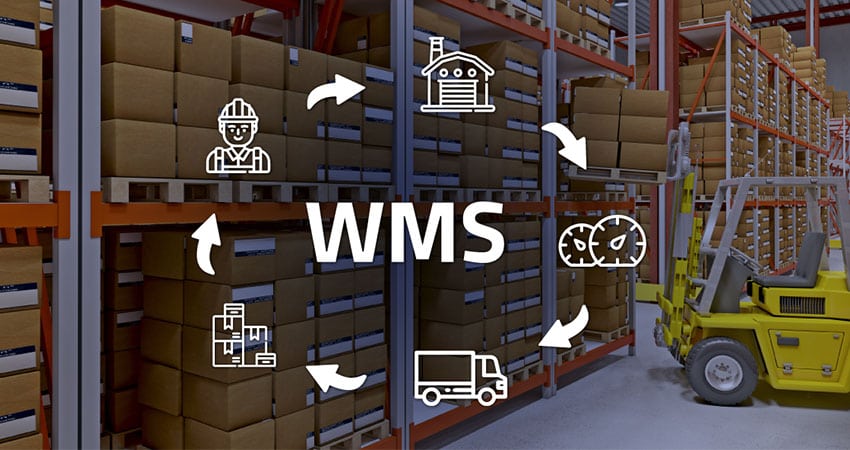Warehouse management systems (WMS) have become more affordable even for small-to-medium-sized ecommerce businesses thanks to the growth in subscription, cloud and Software as a Service (SaaS) models. That’s exciting because of their great potential!
However, you still need to apply a rigorous methodology in order to select the right system that’s within your budget. Short-cutting the process risks a wrong selection, or you may end up spending far more than you need to.
With this in view, here are 13 steps that will help you select the best WMS to meet your current and future ecommerce fulfillment needs:
The Process and Requirements
Form a Project Team: Select a project manager with operations knowledge. Management should also appoint a sponsor who can help gain needed buy-in from decision makers.
Define Your Requirements: Here are nine broad areas to consider. Don’t have a vendor write the requirements to save money. Your requirements document will have hundreds of points to compare vendors and systems:
- Interface with ERP or OMS: Are there standard modules or custom interfaces? What types of detailed data are exchanged?
- Receiving, quality assurance, put away: Is directed put away required? What kind of tracking and reporting?
- Inventory: One of the major benefits of a WMS are their tracking ability, including your four-walls inventory and availability, SKU usage in customer orders, returned product disposition and components used in kitting. Is specialized inventory tracking required by serial number, lot tracking or expiration date?
- Slotting: What functions are in the base system vs. available as add-on modules? How will it save picking time?
- Multi-warehouse scenarios: What are your business rules for multi-facility inventory and split shipments?
- Visibility across the supply chain: Functions include ASNs on inbound purchase orders, in-DC tracking and small parcel shipment tracking through carrier interfaces.
- Automation support: What MHE and automation interfaces/integration are required such as pick-to-light, put-to-light, sorters, conveyors, voice devices and mobile devices? Will a separate warehouse execution system (WES) or warehouse control system (WCS) be required?
- Transportation management and shipping systems: What functions (i.e. best way shipping), types of scales and scanners, carrier interfaces (i.e. small parcel, LTL) and international support are required? What functions are in the base system vs. add-on modules?
- Third-party fulfillment company (3PL): If your business is a 3PL, what functionality is needed to better serve multiple clients and brands, such as rate card billing by client, including the quantity of service provided? For any vendors you consider, check how many 3PLs they have as clients.
Create a Vendor Short List: Do preliminary research to select 4-5 qualified vendors based on required functions and likely costs. You can’t research dozens of companies in detail.
Write a Request for Proposal (RFP): Include requirements, pricing for licenses, services, equipment, annual support, implementation methodology, agreements and references. Get signoff from your organization on the RFP and send it to the vendors.
Analyze the Vendor Responses: Review the RFP responses and select the best 2-3 vendors for demos. Put together scripted demos of what functions you want to see.
Conduct Evaluations: Evaluate the demo responses of your short list candidates.
Develop Reference Call and Site Visit Scripts: Call the references, both those provided by the vendor and others you know that use the system. Set up visits with as many as possible.
Last Reviews: Have the two finalists return to check out further functionality, ask questions and verify pricing and implementation methodology before making your decision.
Start Project Planning: Before final selection, discuss with finalists the implementation methodology, changes required for your product and stock location marking and your overall responsibilities. Who will be your internal project manager? Don’t leave this important role to the vendor.
Calculate the ROI: What areas of savings and intangibles can you expect? The major savings come from better direct and indirect labor use; inventory tracking throughout the enterprise and all processes; better utilization of DC space through inventory management and slotting; and potential IT support savings from homegrown systems. There are also dozens of intangibles.
Legal Review: Have an attorney review the contracts including user licenses, annual support agreements, third-party hardware/software licenses and support agreements. If you plan to implement a subscription, cloud or SaaS system, pay particular attention to what those services include, such as database backup and disaster recovery and system response time during normal and peak periods.
Final Decision Matrix: Pull together all of your conclusions for functionality, references and site trips and rank those observations to select the best and second-best vendor. After making the final selection, keep the runner-up as a fallback in case any last-minute issues emerge before contract signing.
Final Negotiation: Be careful what you think you can negotiate in terms of cost. Professional services will be the biggest single expense; the exact estimate is at best difficult to pin down.
These are great times to bring the power of WMS to your operations. However, it’s important to be methodical about the process, the features and the ROI to be gained.
Brian Barry is President of F. Curtis Barry & Company

